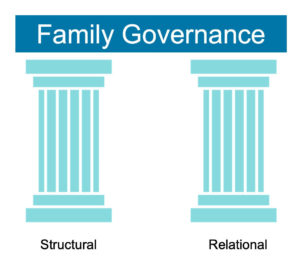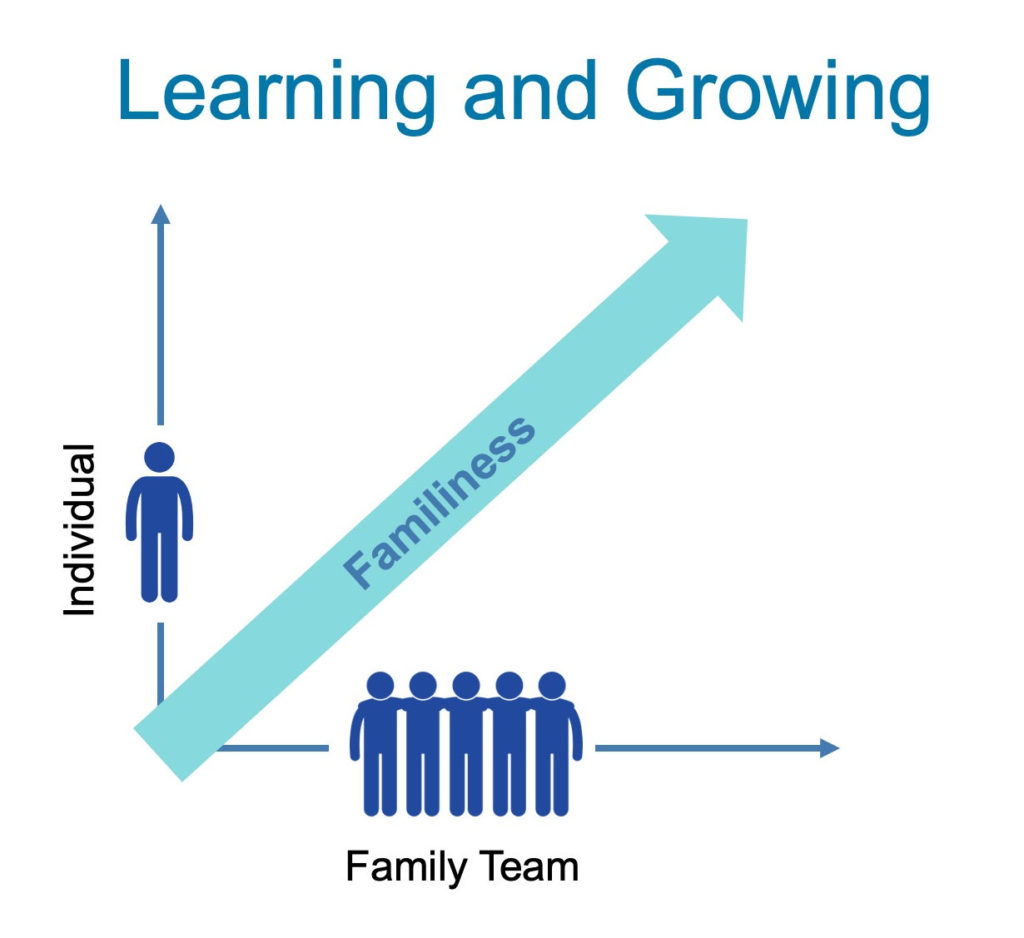Learning how to develop together as a family is at the heart of family business continuity and longevity. However, for many families learning together as a team does not come naturally. Take for example, the Trojack Family (a fictitious name). Peter and Susan always dreamt that the business Peter inherited from his father would stay in the family. They hoped that their four children, despite their different personalities, would naturally form a strong sibling team, learning and growing together and building on the success of the previous two generations.
Thirty years later, after Peter’s death and Susan’s retirement, the siblings have become equal owners and are having difficulty being effective as an ownership team. When asked what is in the way of their working well together, they would say the difficulty lies in the fact that they are all so different and they just don’t communicate well with one another. As children they were taught to “keep the peace”, now as adults they see-saw between two communication patterns. First, a pattern of polite avoidance where they try not to “rock the boat” with one another. Where that is not possible, a secondary pattern shows up – blame and defensiveness, often followed by stonewalling, where they all shut down and retreat to their respective corners without aligning and making decisions on the matters before them.
Recent changes in the economy have spurred the necessity for the siblings to align on an altered business strategy. Since they aim to grow their business and believe there will be new opportunities to acquire other businesses in the near future, there was an urgent need for the siblings to have difficult discussions about how to shift their business strategy in response to the changed economic environment. The siblings recognized that they didn’t want to fall into their usual “vortex” of unproductive communication patterns that tend to make them stuck. At this point, they were aligned on one thing – the need for help. They decided to work with me as their Family Business Consultant to help them learn to improve how they functioned as a sibling ownership team.
The Discovery
As typical during the discovery process, ownership agreements, organizational structure and other important ownership and business documents were reviewed. There were deep discussions with each individual around family dynamics, the family’s and the business’s history and the present state of each. Each sibling spoke of their desire for renewed closeness in their family relationships, and each also affirmed their commitment to the business and their eagerness to explore strategies for renewed growth in the business. These two goals surfaced as overarching themes on which they all aligned. All four agreed that both goals were equally important and although they could see how they were ultimately mutually supportive, based on their past communication patterns, they had little faith that they could learn to engage in difficult conversations without the usual frustration, the resulting hurt feelings and ultimate gridlock that always seem to emerge, despite their best efforts.
The Sibling Team Challenge
Although the siblings were all highly intelligent and accomplished in their own careers, and had individually participated in leadership training and communication workshops in the past, they didn’t know where to start in forming an ownership team that would lead the company in a way that would work for them now that dad was no longer at the helm. What they realized was that even though they were a group of high-performing individuals, that did not necessarily result in them working together as a high functioning team. This breakthrough reveals itself often with families and teams. As individuals achieve higher levels of education and individual success, they often become more entrenched in their own specific ways and focused on their own pursuits. This tendency can, at times, make it even more difficult to put aside their individual perspectives and be willing to “team” with others to achieve a collective purpose. This is especially prevalent in the sibling stage of family business, where there is a transition from one decision-maker to a family team that is required to collaborate and make decisions together.
“A group of high-performing individuals doesn’t necessarily result in them working together as a high functioning team.”
Vertical and Horizontal Learning for Good Governance
As every founder knows, there is an often challenging, personal growth journey that accompanies the evolution of a successful business. Most entrepreneurs will agree that you can’t grow a business without growing a business owner. In the same vein, when the business evolves into a family business and the responsibilities and privileges of ownership transition to siblings or cousins, more complex systems of shared control and responsibility emerge and the vertical learning and self-discovery for leaders needs to be augmented with more horizontal learning and relationship intelligence across the team. The sibling ownership stage is often the first that demands a truly collaborative approach to decision-making and while supporting governance structures that allow for appropriate contributions and accountability are necessary, structure alone does not lead to good governance. Siblings and cousins need to learn advanced relationship and communication skills to work together as a team. Many point to this transition as the hardest and most critical of all in the life of a family-owned firm and they are not mistaken. In this stage, the sage truth is that you can’t continue to grow a family business without “growing” and developing the relationships within the family.

Research and publications have shown that in family business it is most often the “familiness” that makes or breaks the business. This is true in every family business, whether the business is in the second or seventh generation. To support positive familiness, learning and growing must be both vertical (individual) and horizontal (across the family system). This is the only way to sustainably increase the family’s capacity to manage family dynamics and build the necessary trust to move forward together.

As a simple example, I am often asked to coach successors to sharpen their leadership skills in preparation for increased responsibility and influence in their family business. However, in most cases I need to explain to families that coaching the successor alone is only half the job. The more important half is developing the successor and incumbent leader’s relationship – as a team, so that each can put down their proverbial armour and embrace the vulnerability of learning new roles together. Coaching the relationship builds the trust and open communication required for both leader and successor to open-up and “dance together” as one learns to step up, at the same time, the other learns to step back.
All relationships are always in a state of change and emergence, and thus they are always in the process of creating something new. Individual learning and family learning form an interesting paradox, neither is more important than the other and both are mutually supportive. The more the individual learns and evolves, the more they require their family relationships to evolve to support them. The more the family relationships grow, the greater opportunity exists for individuals to learn from one another and grow as well.
Becoming a Learning Family
Tying all this together in a practical way, the first step for the Trojack siblings was to commit to engaging in regular meetings as an ownership team. They stopped getting together quarterly and instead we began to meet biweekly in facilitated virtual meetings. The increased frequency of these meetings provided good structure and continuity and enabled them to stay engaged in the dialogues that needed to take place.
As the Trojack family embarked on the process of defining and trying to align on growth goals, it was not surprising to anyone that the same old predicable patterns began to emerge. This time, however, instead of the conversation ending with stonewalling, we slowed it right down and shifted our attention to what was happening in their relationship in the moment. We observed together how communication toxins were showing up and the impact these had on their relationship. We talked about where blame, criticism and defensiveness lived between them, and what they could do instead to have more positive and productive discussions.
The process was freeing and inspired them to be vulnerable with one another, creating a shared space filled with empathy. Each sibling reflected on their own triggers – what was happening in that moment within themselves, and how this emerged and impacted the communication between them. Their individual and collective awareness about what these communication toxins were doing to their relationships grew, as did their capacity to choose to respond to one another in a new way.
Learning together gave the Trojack siblings access to a new common language and a shared experience that brought new appreciation for one another and greater depth to their relationships. By slowing down, observing what is happening and learning new concepts and relationship skills together, they quickly raised their capacity to align around the growth goals for the company in a more productive and satisfying way. Any family can acquire the skills that the Trojack siblings learned together. Harmony and greater capacity for alignment are within reach for families that are able to raise their awareness and shift from being a family that’s stuck to becoming a “Learning Family.”

